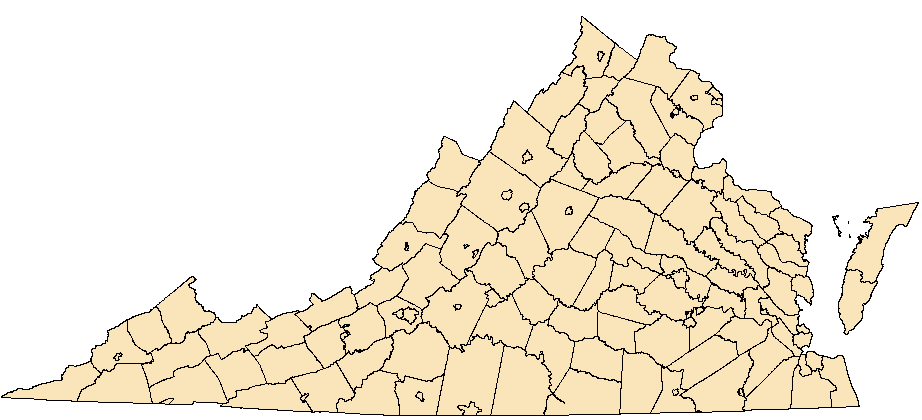Catocala marmorata W.H. Edwards, 1864
Marbled Underwing
NatureServe Global Rank: G3G4
Virginia State Rank: S2
VA DGIF Tier: IV
Federal Legal Status: None
Virginia Legal Status: None
Description: One of the largest Underwings in the Northern Hemisphere, Catocala marmorata boasts a wingspan of 90-95 mm. The forewing is blotchy pale gray with a dramatic black, curved, band that runs from the costa, through the reniform spot, to the outer margin, just below the apex. The hindwing is marked by two alternating bands of pinkish-red and black stripes with a terminal fringe of white. It rests head up on tree trunks.
Similar species: The black line on the forewing of C. vidua passes above the reniform spot, not through it as with C. marmorata.
North American Range: Catocala marmorata currently ranges on the Atlantic Coastal Plain from Delaware to Georgia, the Appalachian Mountains along the West Virginia/Virginia border and west to Illinois, Kentucky and Ohio.
VA Observations by Locality: Montgomery | Montgomery



Flight season and broods: The most prevalent flight season is during the month of August, with scattered records from June through October.
Habitat and Food Plants: Breeding habitats on the Coastal Plain are various forested wetlands and depressions that contain swamp cottonwood (Populus heterophylla) or other food plants. Moist hardwood forests containing cottonwoods or willows (Salix) seems to be the preferred breeding habitat in the mountains.
Behavior and Ecology: Mating probably occurs in late summer, females oviposit in September.
Population trend and potential threats: Because individuals can range over large distances between summer habitats and breeding areas, population trends are difficult to determine. C. marmorata is considered fairly rare in most of its range, although there is evidence that it may be expanding its range in the Delmarva region. Destruction of wetlands where most of its food plants are found, channelization of streams, construction of dams, and alteration of riparian areas are threats to this species.
Management practices: Using Dimilin or other persistent chitin inhibitors may affect egg production in exposed Catocala marmorata females and would probably cause a high mortality rate to first instars. An early application of BTK to control severe outbreaks of Gypsy Moth (Lymantria dispar) larvae might benefit C. marmorata larvae feeding on willows by preventing mass starvation of late instars, since BTK would probably not kill all larvae.
References: Covell, Charles V. Jr. 1984. A Field Guide to Moths Eastern North America. Houghton Mifflin Co., Boston. P. 308.
Moth Photographers Group at the Mississippi Entomological Museum at Mississippi State University. Web application at: http://mothphotographersgroup.msstate.edu/large_map.php?hodges=8804 Accessed: 27Apr2013
NatureServe. 2012. NatureServe Explorer: An online encyclopedia of life [web application] Version 7.1. NatureServe, Arlington, Virginia. Available http://www.natureserve.org/explorer. (Accessed: January 30, 2012.)
Schweitzer, D. F., M. C. Minno, and D. L. Wagner. 2011. Rare, Declining and Poorly Known Butterflies and Moths (Lepidoptera) of Forests and Woodlands in the Eastern United States. USDA Forest Service, Morgantown, WV, FHTET-2011-01. 517 pp.
Virginia Department of Conservation and Recreation, Natural Heritage Program, 600 E. Main St., 24th Floor, Richmond, VA 23219
This atlas was compiled
by the VA Natural Heritage Program with funds provided by the VA Dept. of Game and Inland Fisheries through a state wildlife grant
from U.S. Fish and Wildlife Service
Questions/Comments? Check the contacts page |
Internet Privacy Policy Statement
Last Modified: Friday, 26 February 2021, 03:21:56 PM